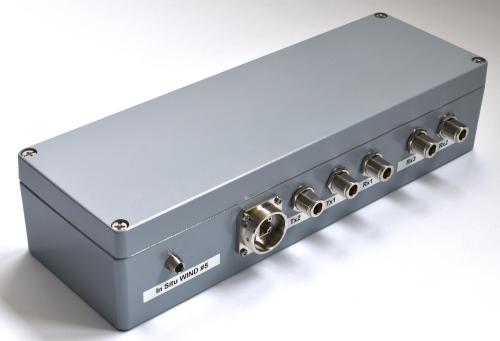"sR2-2300e" operates according to the Stepped-Frequency-Continuous-Wave (SFCW) method and covers the frequency range from 100 MHz to 2 GHz. Discrete frequency steps are generated in the specified range and emitted via one of the two transmission channels (Tx). The output power of the generated RF signal is adjustable up to a maximum of 100mW. The signal is received via three identical receive channels (Rx), which are set up according to the heterodyne method. In this way, the RF signal reflected by the measuring environment can be characterized and evaluated with high precision at three different points. The antennas required for this sensor must be adapted to the respective measuring environment and are connected to the Tx/Rx ports of the sensor via cables. The radar sensor can be used for measurements in electrically dense media such as concrete or ice. Possible areas of application therefore include structural monitoring and ice thickness measurement on frozen bodies of water.
The SFCW radar module is a result of the R&D project Insitu-Wind
"Continuous Structural Monitoring of Grout Connections of Offshore Wind Turbines (OWT)".


| MAIN FEATURES | |
| Radar Method, Modulation | Stepped-Frequency Continuous Wave (SFCW) |
| Operating Frequency Band | 100 MHz to 2 GHz |
| Number of Frequency Points | up to 1024 |
| Measurement Time | < 1 s (depends on Number of Frequency Points) |
| Tx/Rx Channels | 2 * Tx, 3 * Rx |
| RF Output Power | max. 100 mW |
| Data Interfaces | (e) Ethernet, USB only internally |
| Antenna Type | external Antennas |
| Antenna Connectors | N-female |
| Interface for Environmental Sensor | I2C |
| Operation Voltage | 48 V, Power-over-Ethernet |
| Operation Power | max. 10 W |
| Housing Dimensions (L x W x H) | 360 x 120 x 81mm, IP66 |
| Weight w/o Cables and Antennas | 2.7 kg |


